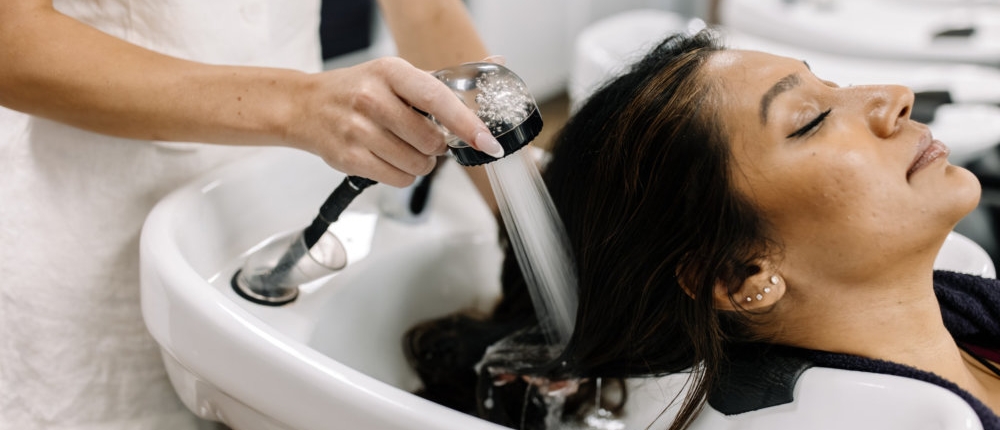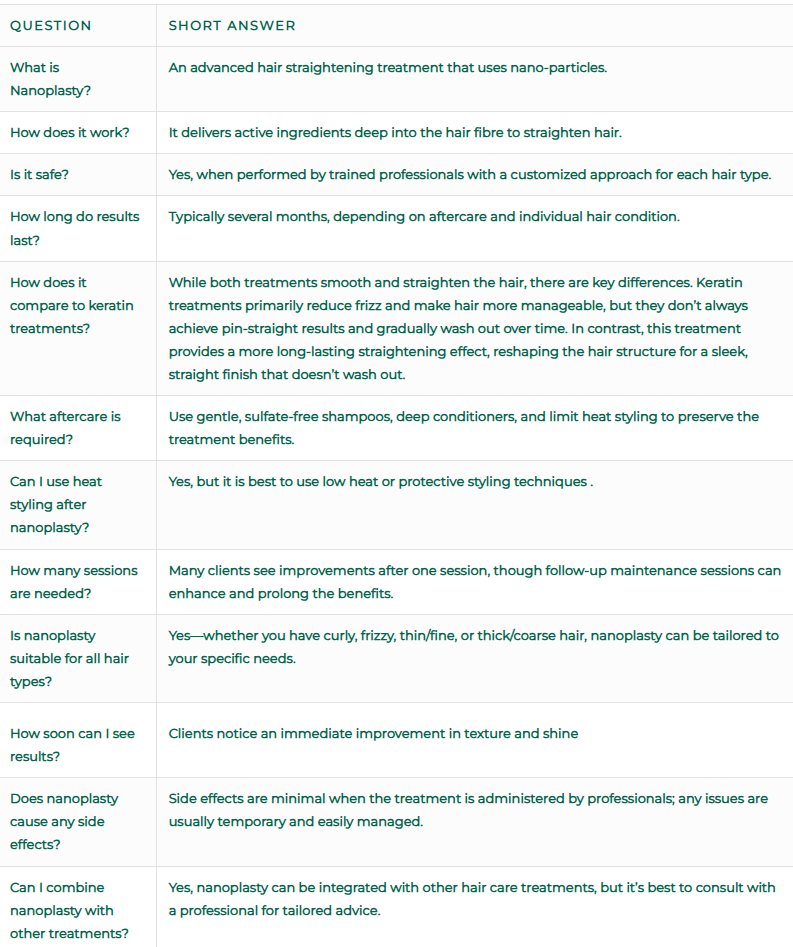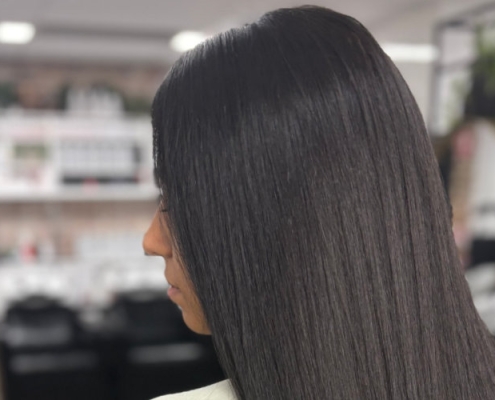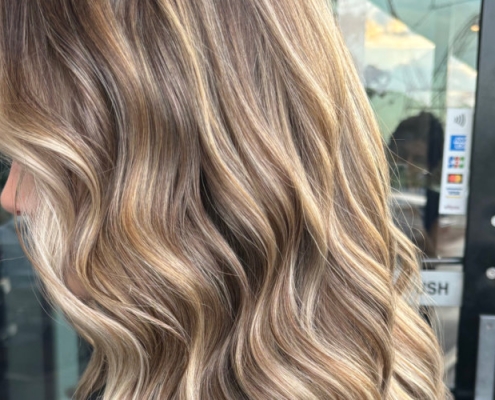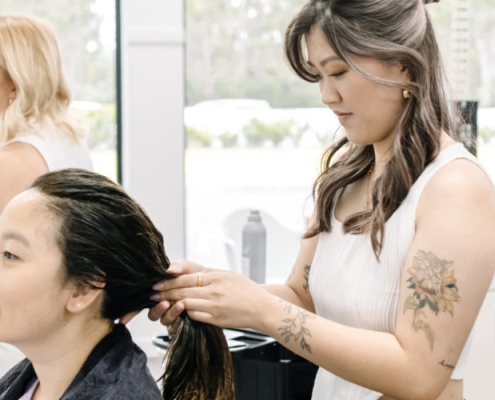Nanoplasty FAQs: Answers to Your Top Hair Care Questions
In this comprehensive FAQ article, we address all your common questions about nanoplasty—from how it works and what to expect during a session, to aftercare, safety, and comparisons with other treatments. Whether you’re new to this technology or looking to refine your hair care routine, read on for detailed answers in easy-to-understand language.
Quick Reference FAQ Table
Detailed FAQs
1. What Is Nanoplasty?
Nanoplasty is an advanced hair straightening treatment that uses nano-sized particles to penetrate deep into the hair. Unlike traditional treatments that simply coat the surface, nanoplasty restructures the hair from within to create a long-lasting, sleek, and straight finish. The active ingredients work at a deeper level to realign the hair’s natural bonds, resulting in smooth, frizz-free, and effortlessly straight hair.
For a complete overview, check out our Nanoplasty Ultimate Guide.
2. How Does Nanoplasty Work?
Nanoplasty is a cutting-edge hair straightening treatment that reshapes the hair structure at a molecular level. Here’s how it works:
-
Nano-Sized Particles Penetrate the Hair – Unlike traditional treatments that sit on the surface, nanoplasty uses microscopic particles to penetrate deep into the hair shaft.
-
Bond Realignment – These particles carry active ingredients, such as amino acids and natural acids, which break and reform the hair’s internal bonds. This process restructures the hair into a straighter, smoother shape.
-
Long-Lasting Straightening Effect – Once the bonds are realigned, the hair is sealed with heat, locking in the straightened structure. Unlike keratin treatments, which gradually fade, nanoplasty provides a more permanent result that only grows out with new hair.
-
Frizz Control Without Harsh Chemicals – Nanoplasty does not rely on formaldehyde or other harsh chemicals, making it a gentler yet highly effective straightening method. It eliminates frizz while maintaining a soft, natural movement in the hair.
-
Final Touches – After the treatment, the hair is blow-dried and flat-ironed to ensure a sleek, smooth finish. The results are shiny, manageable, and straight with long-term durability.
3. Is Nanoplasty Safe?
Nanoplasty is considered very safe when performed by experienced professionals. Here’s why:
Nanotechnology, which is at the core of nanoplasty, has been extensively researched and used in various industries, including medicine and cosmetics. The nano-sized particles in the treatment are engineered to be biocompatible, meaning they work in harmony with your hair’s natural structure. This ensures that the active ingredients are delivered precisely where they’re needed without causing harm.
The safety of nanoplasty is further enhanced by the fact that the treatment is fully customized. Before the procedure, a trained stylist carefully examines your hair type and condition. This personalized approach means that only the appropriate amount of active ingredients is used for your specific needs. As a result, the risk of over-treatment or adverse reactions is minimized.
Side effects are generally very rare and mild. Some clients might experience slight scalp sensitivity or temporary dryness immediately after the treatment, but these issues typically resolve quickly with proper aftercare. Salons that offer nanoplasty also provide detailed aftercare instructions to help you maintain your hair’s health and minimize any minor discomfort.
Overall, when administered by professionals who follow established safety protocols, nanoplasty is a safe and effective way to straighten your hair.
4. How Long Do the Results Last?
The longevity of nanoplasty results can vary based on several factors, including your hair type, the extent of damage, and your post-treatment care. Here’s a deeper look into what influences how long the benefits of nanoplasty will last:
-
Hair Type:
Different hair textures respond uniquely to the treatment. For instance, fine or thin hair, which is more fragile, may show visible improvements quickly, but might require more regular maintenance compared to thicker, coarser hair that retains the treatment effects for a longer period. -
Damage Severity:
If your hair has extensive damage from chemical treatments, heat styling, or environmental exposure, the process may need additional sessions. In such cases, while you might notice immediate improvements after one session, optimal results and longevity are often achieved with periodic maintenance treatments. -
Aftercare Routine:
Proper aftercare is crucial for extending the treatment’s benefits. To maximize longevity:- Use Gentle, Sulfate-Free Products: Sulfates can strip away the active ingredients that nanoplasty has bonded with your hair, reducing its effectiveness.
- Deep Conditioning: Regular deep conditioning treatments help lock in moisture.
- Limit Heat Styling: Excessive use of high heat can damage the hair again, undermining the benefits of nanoplasty. When heat styling is necessary, use protective sprays and lower temperature settings.
- Environmental Protection: Protect your hair from harsh weather conditions and pollutants by using hats or protective sprays.
-
Individual Factors:
Each person’s hair has its own unique characteristics and maintenance needs. Some may experience lasting benefits for five to seven months, while others might find that a follow-up treatment is beneficial sooner.
Overall, with proper care and maintenance, many clients enjoy the benefits of nanoplasty for several months. Consistent and careful aftercare is the key to prolonging the results and ensuring that your hair remains strong, shiny, and resilient.
For detailed aftercare advice, visit our Nanoplasty Services page.
5. How Does Nanoplasty Compare to Keratin Treatments?
Both nanoplasty and keratin treatments are designed to smooth and straighten hair, but they work in different ways:
Nanoplasty:
Restructures the hair at a molecular level, permanently straightening it by realigning its internal bonds. This results in long-lasting smoothness and straightness that only grows out over time.
Keratin Treatments:
Coat the hair with a layer of protein to reduce frizz and enhance shine, but the straightening effect is temporary and fades with washes, typically lasting a few months.
Nanoplasty provides a more permanent straightening solution, while keratin treatments focus on smoothing and manageability.
For a full comparison, see our Nanoplasty vs. Keratin Treatments article.
6. What Does the Aftercare Involve?
Aftercare is crucial to ensure the lasting benefits of nanoplasty. Key aftercare tips include:
-
Using Sulfate-Free Shampoos:
These help maintain the integrity of the treatment without stripping away moisture. -
Regular Deep Conditioning:
Deep conditioning treatments help maintain the smoothness and longevity of your nanoplasty treatment, keeping your hair hydrated and frizz-free. -
Limiting Heat Styling:
Excessive heat can undo some of the benefits, so it’s best to use heat styling tools sparingly or on a low setting.
Your stylist will provide personalized recommendations based on your hair’s needs.
7. Can I Use Heat Styling After Nanoplasty?
Yes, you can use heat styling tools after nanoplasty, but it’s essential to do so with care to maintain the treatment’s straightening effects. Nanoplasty restructures the hair from within, and excessive heat can compromise the newly realigned bonds. Here are some key tips to ensure safe and effective heat styling after nanoplasty:
-
Use Low Heat Settings:
High temperatures can stress your hair, so it’s best to keep your heat styling tools—whether it’s a hair dryer, flat iron, or curling wand—set on low to medium heat. This gentle approach helps protect your hair while still allowing you to achieve your desired style. -
Always Apply a Heat Protectant:
Before using any heat styling tools, make sure to apply a quality heat protectant. This product creates a barrier between your hair and the heat, reducing the risk of further damage and helping to lock in the benefits of your nanoplasty treatment. -
Alternative Drying Methods:
If you want to avoid heat altogether, consider air-drying your hair. Air-drying minimizes the risk of heat damage, though it may take longer to dry your hair completely. For some clients, using a steamer—a device that gently circulates warm, moist air—can also be a great alternative to traditional heat styling. This method provides enough warmth to help set your style without the intense heat that can cause damage. -
Limit Frequency of Heat Styling:
Even when using low heat and protective products, try to limit the frequency of heat styling. Reserve heat styling for special occasions or necessary styling moments, and rely on natural drying or low-heat alternatives for daily routines. -
Follow Professional Advice:
Your stylist who performed the nanoplasty treatment will give you personalized recommendations based on your hair type and the specifics of your treatment. Follow these guidelines closely to maximize the longevity of your treatment benefits.
By using these careful methods, you can enjoy the flexibility of heat styling while still preserving the lasting benefits provided by nanoplasty. This balanced approach helps ensure your hair remains healthy, strong, and vibrant for as long as possible.
8. How Many Sessions Are Needed?
The number of sessions varies depending on the extent of your hair damage and your desired results. Many clients notice a significant improvement after just one session. However, for optimal and long-lasting results, periodic maintenance sessions are often recommended. A consultation with a professional can provide a customized treatment plan.
9. Is Nanoplasty Suitable for All Hair Types?
Nanoplasty is highly versatile and can be tailored to suit various hair types, including:
- Curly Hair: Enhances moisture and maintains natural curl patterns while reducing frizz.
- Frizzy/Unmanageable Hair: Smooths the cuticle for a sleeker, more manageable look.
- Thin/Fine Hair: Strengthens delicate strands without adding weight.
- Thick, Coarse, or Ethnic Hair: Provides softening texture while reinforcing strength.
For more information, read our Nanoplasty for Different Hair Types article.
10. How Soon Can I See Results?
11. Does Nanoplasty Cause Any Side Effects?
Nanoplasty is designed to be gentle and safe. When administered correctly, side effects are rare and typically minor. Some clients may experience slight scalp sensitivity or temporary dryness, which usually resolves quickly with proper care. Always discuss any concerns with your stylist before beginning treatment.
Final Thoughts
Nanoplasty represents a breakthrough in hair care technology . Whether you’re looking for long-term strength, enhanced moisture, or a solution that works for your unique hair type, nanoplasty offers a versatile, scientifically backed treatment option.
For more comprehensive information on the treatment, visit our:
- Nanoplasty Ultimate Guide
- Nanoplasty Advanced Hair Treatment
- Nanoplasty Services
- Nanoplasty vs. Keratin Treatments
- Nanoplasty for Different Hair Types
We hope these FAQs help you make an informed decision about your hair care journey with nanoplasty. With proper care and the right treatment plan, you can enjoy healthier, more resilient hair that looks and feels fantastic.

